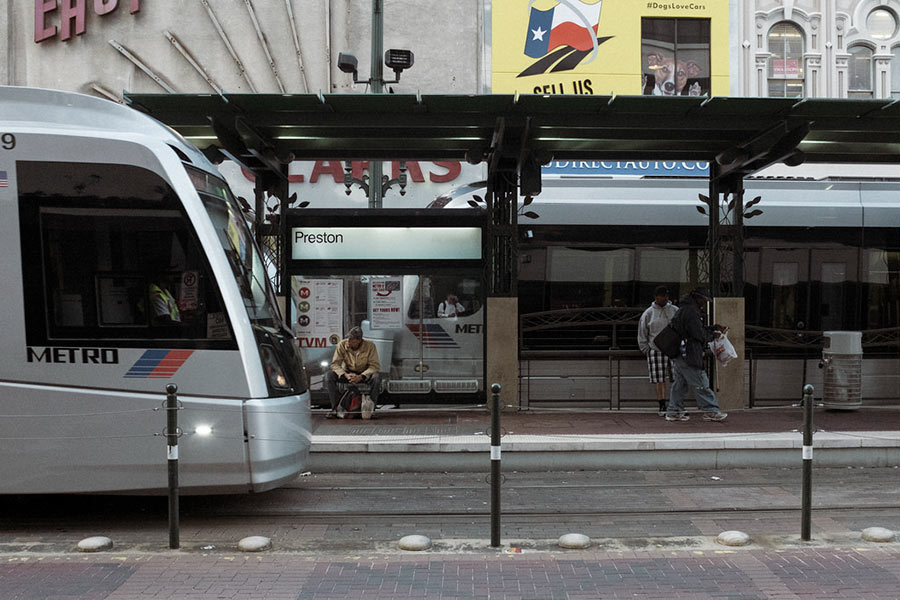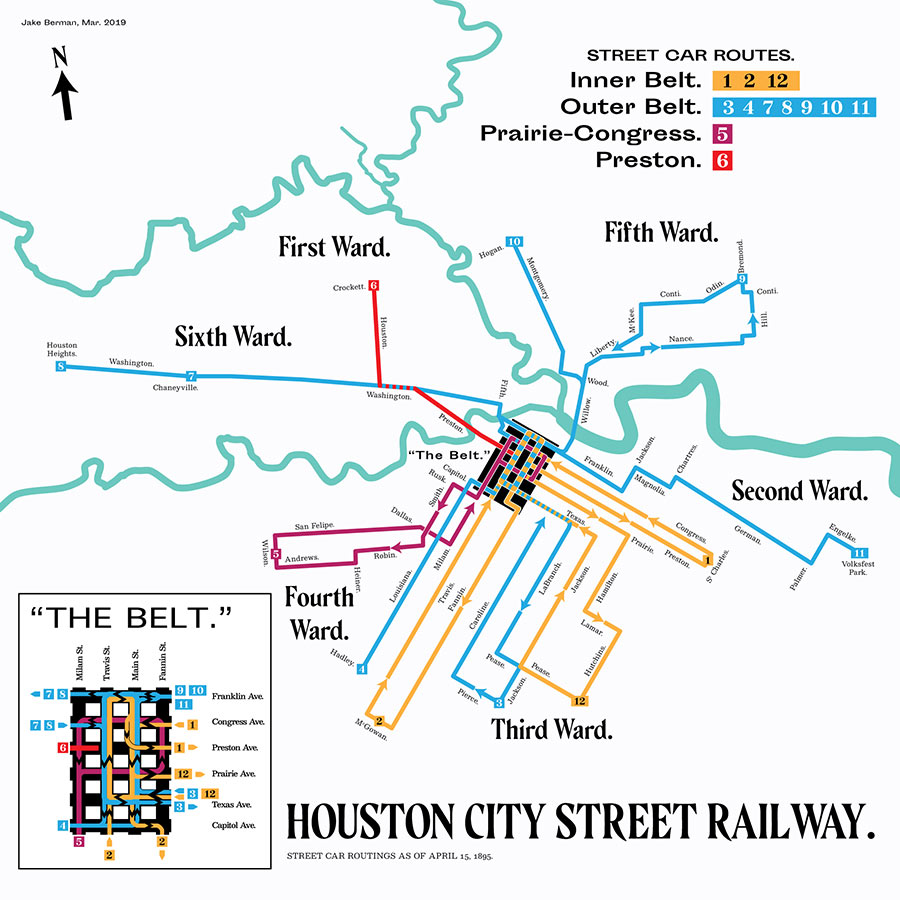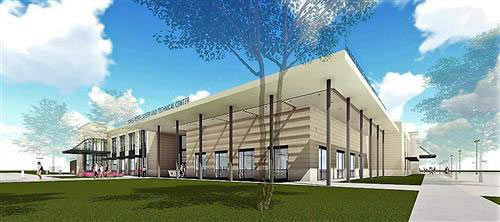WHAT TXDOT’S TINY 2-YEAR PUBLIC TRANSIT ALLOWANCE ADDS UP TO  Transit-focused fact-finder Allyn West pulls out this nugget from the Texas Tribune’s report on regional transit development: “While the Texas Department of Transportation has a budget of more than $26 billion for the 2018 and 2019 fiscal years, less than 1 percent of that is earmarked for public transit.” That puts the burden squarely on county and local agencies — including metropolitan planning groups like the Houston-Galveston Area Council — to dig up funding for non-car-catering projects. [Texas Tribune via Allyn West] Photo of Preston St. METRO stop: telwink via Swamplot Flickr Pool
Transit-focused fact-finder Allyn West pulls out this nugget from the Texas Tribune’s report on regional transit development: “While the Texas Department of Transportation has a budget of more than $26 billion for the 2018 and 2019 fiscal years, less than 1 percent of that is earmarked for public transit.” That puts the burden squarely on county and local agencies — including metropolitan planning groups like the Houston-Galveston Area Council — to dig up funding for non-car-catering projects. [Texas Tribune via Allyn West] Photo of Preston St. METRO stop: telwink via Swamplot Flickr Pool





Add to the fact that you have a predominating mentality that’s ignorant and overly hypercritical when it comes to the development of ANY type public transposition. Yet any kind of questionable activity or billion dollar plus freeways in undeveloped areas that TXDOT loves so much, barely even register any scrutiny whatsoever with the same public transportion critics.
also there appears to be a well-funded campaign by outsiders with a financial interest in car travel interfering in local affairs:
https://www.nytimes.com/2018/06/19/climate/koch-brothers-public-transit.html
Why shouldn’t TXDOT be focused primarily on increasing inter-regional and intra-state capacity though?
.
I’d prefer the state look after the state’s best interest and focus on larger mobility projects to increase business investment and GDP.
.
Likewise, cities can best address their own mass transportation needs and the fairest way to do this is have mass transit funded by localities.
.
I’d still gladly support raising gas taxes to fund more mass transit projects even if I won’t ever use any of them though. Just raise them and pocket the money even. Just do something for crying out loud.
joel,
.
it frustrates me so hard when people who drive and would never get on a train/bus say that they would never use public transit.
.
if there were a commuter rail from katy to downtown that had ridership of 40,000 a day, that’s 40,000 fewer cars on the highway, so you would gain benefit from mass transit in fewer cars on the highway, and thus, less congestion. you gain a benefit, even by never stepping foot on a train.
.
The beauty of it though, is that if it takes 30 minutes to get downtown on a train, people who would never get on a train will recognize that and get on the train rather than sitting in traffic for 45 minutes. So never say never.
And, the Dept of Weights and Measures has funding only to provide a re-coat of their asphalt drive way. The TxDot is not in the train, tram, bus, etc., business. Local governments and special entities supply all the corruption, deviousness and foolishness in this area that Texans can stomach.
@Toasty, i’m on your side, but just stating the unfortunate reality.
.
I lived in Montrose for 12yrs until a few months back and would have loved to take transit. However, mass transit in Houston is designed to funnel people to the CBD. During this time period I worked in 2 of the largest business districts in the city (Westchase & Energy Corridor). There is NO transit option to the energy corridor. I could’ve taken the Richmond bus to Westchase I suppose if I didn’t mind making my 20min commute over an hour long.
.
In order to build the mass transit I could use, user fees and sales taxes would have to increase to unsustainable levels. That is the reality for the vast majority of Houstonians. Yes, a train from Katy would work great, but it has to be funded by user fees because the majority of people living in Katy aren’t heading downtown.
Toasty, that just means there’s room for 40k more cars and the sprawl continues.
@Barks
Why should the state department of transportation be focused exclusively on one mode of transportation? I drive a car and I still don’t understand it. What about all of the people in Texas who can’t afford cars?
J said: “Toasty, that just means there’s room for 40k more cars and the sprawl continues.”
.
My thoughts exactly! But, sadly, this whole thing is a chicken-and-egg question. Does sprawl cause inexorable car buying/use? Or, does car ownership cause sprawl to happen? Which do you stop first?
TxDoT continues to be one of the worst DoTs in the entire country–no surprise there.
Mass Transit does not reduce congestion on streets and i contend that doesnt matter very much. There’s a litany of studies, books, etc that show that basically it permits further sprawl.
The users of the trains/mass transit end up saving a lot more money over their car commuting counterparts, commute times for the people way out in the burbs continues to increase where as mass transits systems more or less stay consistent. Mass transit systems also have the ability to increase capacity a lot easier and quicker than large scale highway project. Anyone think that 610 Loop in the galleria could be widened easily? No. Eventually that congestion could be a stagnating influence on the economic development of the area. But we had train lines from downtown to uptown to memorial city, to Katy. You’d be giving alternate means of transportation to these localities with the ability to increase the amount of trains, the size of the trains, etc…
The city also benefits by having multiple options and multi-modal transportation systems into the city center. Build a train out to Katy, you give working class people the opportunity to commute to other parts of the city without the car. This spurs economic development for Katy. Middle class/upper middle class individuals who take the train downtown for work also fundamentally could technically reduce the parking requirements for office buildings and retail spaces. Which again, gives developers in the city more land, which can spur economic development in the city as well (this doesn’t serve to reduce congestion).
Dont look at trains as a mitigation for congestion, look at them as influence for economic development.
Those are my thoughts.
@Purdueenginerd
Are you referring to USA only? I have used mass transit in Helsinki, London, Brisbane, Sydney and Hong Kong and it does have a direct effect on reducing traffic by being an alternative mode especially with congestion pricing. Back in the States and to your point, DART and Texrail (ft. Worth), are using light rail to lease out/build TOD at stations. E.g. mockingbird station, downtown fort Worth station, grapevine station